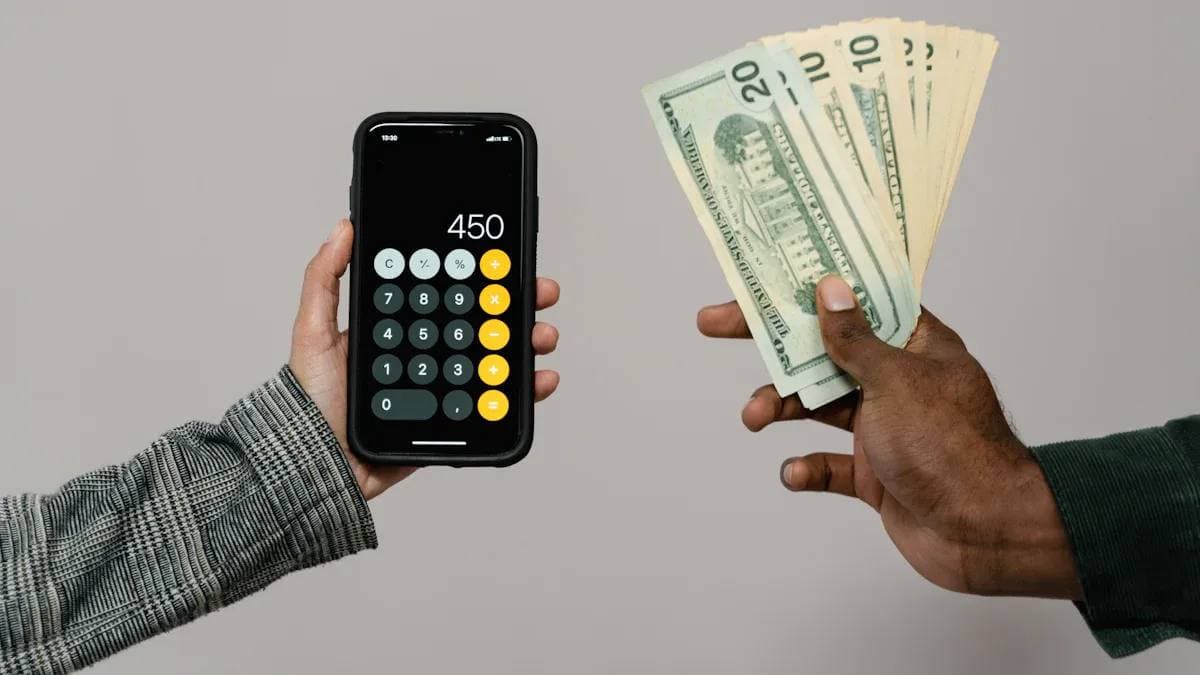- EasyCard
- Trade
- Help
- Announcement
- Academy
- SWIFT Code
- Iban Number
- Referral
- Customer Service
- Blog
- Creator
How to Ensure Security and Efficiency When Sending Money to Japan?
The issue of how to send money to Japan has attracted widespread attention, and BiyaPay can help enhance the flexibility of the entire process. This article will introduce to you the main methods of sending money to Japan, a comparison of fees, security, and recommended payment methods, helping you make a wise choice.

Which methods are suitable for sending money to Japan?
There are various ways to send money to Japan, ranging from traditional bank transfers to modern digital wallets, and each method has its own advantages and disadvantages. The choice of which method to use should be judged according to your needs, such as the remittance amount, the required arrival time, your preference for security, and your fee budget.
Firstly, bank transfer is one of the most traditional and trusted methods. Although its processing time is relatively long, generally taking 1 to 3 working days for the funds to arrive in the account, the transaction tracking, transaction vouchers, and bank guarantees it provides give this method obvious advantages in terms of security. For large remittances or important commercial transactions, bank transfer is often the first choice.
Online remittance services provide users with more convenience and flexibility. Such services are usually operated through Internet platforms, such as PayPal, Wise, or other localized remittance platforms. Users only need to register an account, bind a bank card or credit card, and they can easily initiate an international remittance. The fast processing speed is its greatest advantage, and some services can even transfer funds to the payee’s account in Japan within a few minutes.
Another option is foreign exchange remittance services, that is, cross-border transfer solutions provided by foreign exchange trading companies. These services usually have competitive exchange rates and a lower fee structure, which is particularly suitable for users who pay attention to cost control. Their arrival time may be a bit longer, but in most cases, they can provide clear transaction progress tracking.
Different users attach different importance to speed, fees, and security. Therefore, when choosing a remittance method, you should weigh various factors to find the solution that best meets your own needs.
What fees should be noted when making a remittance?
In the process of cross-border remittance, the fee structure is a key factor affecting the user experience and choice. Different remittance methods have different fee compositions, and some seemingly have low rates but actually hide costs through exchange rate differences.
Bank transfers usually charge a fixed handling fee, and this fee is relatively transparent, allowing users to know it before initiating the transaction. However, in the intermediate transfer links between banks, especially when there is no cooperation between correspondent banks, additional correspondent bank fees may be incurred, and most of these fees are borne by the payee. In addition, some banks will charge additional handling fees according to the remittance destination.
Online remittance services pay more attention to the user experience and the rationality of fees. Many platforms adopt a model of charging a percentage of the remittance amount, for example, charging a handling fee of 1% to 3%. Compared with traditional banks, this fee is relatively low and is more suitable for small and frequent transfers. Moreover, such platforms generally offer exchange rates closer to the mid-market rate, making the final amount received more cost-effective.
Peer-to-peer payment applications, such as Venmo, Cash App, etc., are usually used for domestic transactions, but some have also expanded their international remittance functions. Most of these applications do not charge a fixed handling fee, but you need to pay attention to their exchange rates, arrival time, and related terms.
As a fast remittance method, telegraphic transfer generally has a processing time of no more than 1 working day, but its fees are relatively high, usually including the handling fee of the issuing bank, the fees of the correspondent bank, and the possible additional posting fees of the receiving bank. If the timeliness of the transaction is the primary consideration, although telegraphic transfer has a higher cost, its speed advantage cannot be ignored.
Therefore, to avoid unexpected costs, users should understand the complete fee structure before making a remittance, clarify who will bear which fees, and evaluate the balance between fees and arrival speed.
Which channels are more suitable for quickly sending money to Japan?
When the timeliness of remittance becomes a priority, choosing the right remittance channel is crucial. Different from traditional bank transfers, the development of modern remittance technology has brought users more options for instant transfers.
Online remittance services are renowned for their convenience and speed. These services usually rely on local payment networks or partner banks for settlement, enabling cross-border transfers to be completed within minutes or hours. For example, some services support “instant arrival.” Once the user completes the payment verification, the system immediately triggers the payment process. This model is particularly practical for emergency family support or temporary commercial payments.
Telegraphic transfer is another expedited method provided by banks, and users can initiate it through bank counters or online banking systems. The greatest advantage of telegraphic transfer lies in its speed. Especially when using the SWIFT network, cross-border funds can arrive in the account within 1 day. However, the high fees of telegraphic transfer are still the reason why many users choose other alternative methods.
Digital wallets are becoming an important part of modern remittance. Such wallets can not only store currency but also directly initiate transfer operations, and the operation experience is similar to that of instant messaging tools. By binding a credit card or debit card, users can directly initiate cross-border transfers from the digital wallet and notify the payee in real time, enhancing operational efficiency.
These fast remittance methods provide users with multiple choices, but in actual operation, attention also needs to be paid to transaction limits, currency exchange rules, and user identity verification mechanisms. No matter which channel is chosen, ensuring standardized operations and accurate information is the prerequisite for ensuring the rapid and safe completion of the remittance.
Which payment methods do Japanese banks support for receiving remittances?
When making international remittances, it is equally important to understand the acceptable payment methods of the payee. Japan has a developed banking system and generally accepts various types of cross-border payments, including traditional and modern payment methods, providing greater flexibility and convenience.
Telegraphic transfer is still the most commonly used method for Japanese banks to receive remittances, especially widely applied in cross-border business and large personal transactions. Japanese banks generally have a complete SWIFT network connection and can quickly process international capital inflows. Users only need to provide the payee’s account information, the bank’s SWIFT code, and the branch address to complete the remittance operation.
In addition to telegraphic transfer, bank transfer is also a commonly used method, especially for transactions between domestic accounts. International users can directly transfer funds to the payee’s bank account through remittance services that support Japanese bank accounts. The entire process is completed relying on the local banking system, and the procedures are relatively simple.
In terms of modern payment methods, debit cards and credit cards are gradually accepted by some banks or platforms as sources of remittance. For example, some remittance services allow users to bind a Visa or Mastercard for payment, and then transfer the funds to a Japanese bank account, simplifying the transfer process.
It is worth mentioning that although cash remittance is becoming less and less common in international transactions, some Japanese banks still allow receiving cash deposits through counter services or using prepaid cards to recharge the account. However, this method is suitable for local residents and is not common for overseas users.
Therefore, it is recommended that remitters understand clearly which specific payment methods the payee’s bank accepts and whether there are any restrictions on certain channels before initiating the transaction. This can effectively improve the success rate and efficiency of fund arrival.
Conclusion
Choosing a way to send money to Japan is not actually difficult. As long as you plan and compare according to your needs, you can find a way that is both cost-effective and efficient. Whether it is a bank transfer that emphasizes security or online services and digital wallets that focus on efficiency, there are applicable scenarios. If you also want to experience a service that has no limit on the amount, covers most countries, and adopts the local remittance method, you might as well consider BiyaPay. It not only makes remittance faster but also does quite well in terms of security and user experience, making it a choice worth trying.
*This article is provided for general information purposes and does not constitute legal, tax or other professional advice from BiyaPay or its subsidiaries and its affiliates, and it is not intended as a substitute for obtaining advice from a financial advisor or any other professional.
We make no representations, warranties or warranties, express or implied, as to the accuracy, completeness or timeliness of the contents of this publication.




Contact Us
Company and Team
BiyaPay Products
Customer Services
is a broker-dealer registered with the U.S. Securities and Exchange Commission (SEC) (No.: 802-127417), member of the Financial Industry Regulatory Authority (FINRA) (CRD: 325027), member of the Securities Investor Protection Corporation (SIPC), and regulated by FINRA and SEC.
registered with the US Financial Crimes Enforcement Network (FinCEN), as a Money Services Business (MSB), registration number: 31000218637349, and regulated by FinCEN.
registered as Financial Service Provider (FSP number: FSP1007221) in New Zealand, and is a member of the Financial Dispute Resolution Scheme, a New Zealand independent dispute resolution service provider.



















